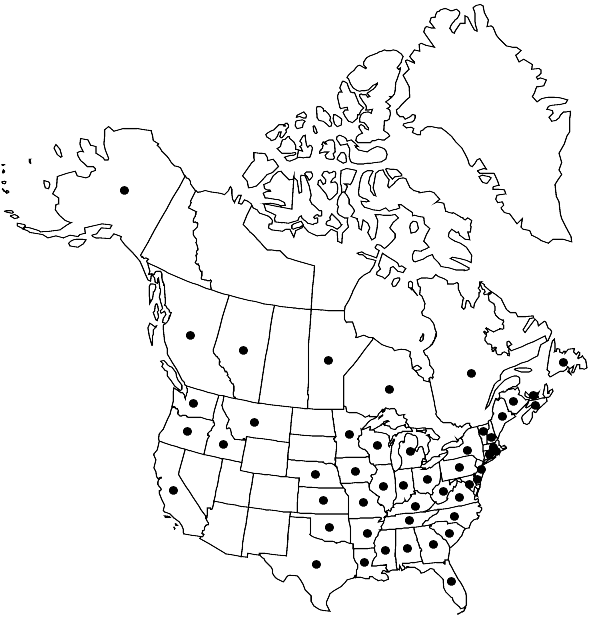Dicranella heteromalla
Coroll. Bryol. Eur., 13. 1856,.
Plants to 10, rarely 40 mm, in rather shiny, yellow to dark green tufts. Leaves erect to falcate-secund, 2–3 mm, gradually narrowed from a lanceolate base to a subula largely occupied by the costa; margins erect, serrulate in the distal half of the limb; costa excurrent; cells in 1–3 rows above the leaf middle, rather short-rectangular, 11–14 × 4–7 µm. Sexual condition dioicous. Seta 5–15 mm, yellowish. Capsule 1–1.5 mm, suberect or sometimes inclined to horizontal, cylindric, often curved, asymmetric, tapered at the neck, usually ± obliquely furrowed and constricted on 1 side below an oblique mouth; annulus consisting of 1 row of small cells, persistent; operculum long-rostrate; peristome teeth 400–500 µm, divided 1/2 length distally. Spores 14–18 µm, faintly roughened.
Phenology: Capsules mature spring and summer.
Habitat: Soil of shaded banks, especially along woodland trails, and soil covering upturned roots
Elevation: low to high elevations
Distribution

Alta., B.C., Man., N.B., Nfld. and Labr. (Nfld.), N.S., Ont., P.E.I., Que., Ala., Alaska, Ark., Calif., Conn., Del., Fla., Ga., Idaho, Ill., Ind., Iowa, Kans., Ky., La., Maine, Md., Mass., Mich., Minn., Miss., Mo., Mont., Nebr., N.H., N.J., N.Y., N.C., Ohio, Okla., Oreg., Pa., R.I., S.C., Tenn., Tex., Vt., Va., Wash., W.Va., Wis., Central America (Costa Rica), Central America (Honduras), Central America (Panama), South America (Colombia), Europe, Asia (China), Asia (e Himalayas), Asia (Japan), Atlantic Islands (Canary Islands), Atlantic Islands (Madeira), n, e Africa
Discussion
Dicranella heteromalla is a common species recognized by suberect, obliquely furrowed capsules tapered toward the base and oblique at the mouth. The leaf margins are distinctly toothed above the middle. Reports for Oklahoma are by B. D. Mahler and W. F. Mahler (1980) and from Texas by E. Whitehouse and F. McAllister (1954).
Selected References
None.